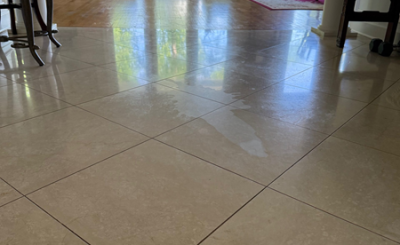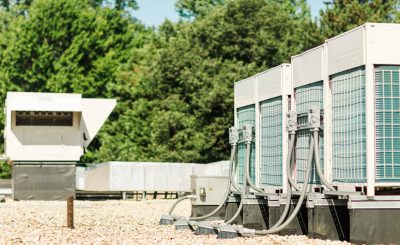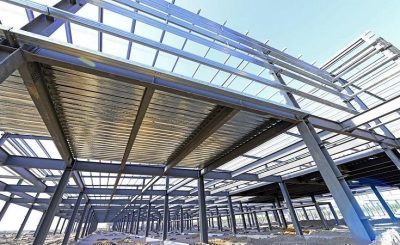Historical Use of Asbestos in Construction
For many decades, asbestos was a go-to material in building construction. Its properties, like resistance to heat and fire, and its insulating capabilities, made it seem like a miracle substance. This was especially true for military housing projects, including those built for Navy families. Think about it: buildings needed to be durable, safe from fire, and easy to heat or cool. Asbestos fit the bill perfectly. It was mixed into insulation, ceiling tiles, floor tiles, pipe wrap, and even some types of cement and paint. This widespread use means that many older Navy housing structures likely contain asbestos in various building components. The very materials that were meant to protect and insulate could, ironically, pose a long-term health risk.
Identifying Asbestos-Containing Materials
Spotting asbestos isn’t always straightforward, especially for the untrained eye. Many asbestos-containing materials (ACMs) look like ordinary building supplies. For instance, some textured paints or older vinyl floor tiles might contain asbestos fibers. Insulation around pipes or in attics could also be a source. The danger isn’t usually from intact materials, but when they become damaged or disturbed. This is when tiny asbestos fibers can become airborne. If you suspect asbestos is present in your home, it’s best not to try and identify it yourself. Professional testing is the safest way to know for sure. They can take samples and send them to a lab for analysis.
The Link Between Asbestos and Mesothelioma
The connection between asbestos and mesothelioma is well-established and deeply concerning. Mesothelioma is a rare and aggressive cancer that primarily affects the lining of the lungs, abdomen, or heart. It’s almost exclusively caused by exposure to asbestos fibers. When asbestos materials are disturbed, microscopic fibers are released into the air. If these fibers are inhaled or ingested, they can lodge in the body’s tissues. Over a long period, often 20 to 50 years or more, these fibers can cause inflammation and genetic damage, leading to the development of mesothelioma. This long latency period is a significant factor in why mesothelioma is often diagnosed so late.
Understanding Mesothelioma Navy Family Housing Concerns
Navy families, particularly those residing in older housing on or near naval bases, may have faced unique asbestos exposure risks. The materials used in construction decades ago often contained asbestos, a mineral known for its insulating properties but also its severe health hazards. This exposure, even in seemingly minor amounts, can lead to serious long-term health issues.
How Navy Families Encountered Asbestos
Living in military housing from the mid-20th century meant families were often surrounded by asbestos-containing materials. These materials were common in insulation, flooring, ceiling tiles, and even some pipe coverings. Disturbances to these materials, whether through normal wear and tear or minor repairs, could release microscopic asbestos fibers into the air. These fibers could then be inhaled or ingested by residents, including children.
The Latency Period of Mesothelioma
One of the most concerning aspects of asbestos-related diseases, like mesothelioma, is the long latency period. This means that the time between initial exposure to asbestos fibers and the development of symptoms can span anywhere from 10 to over 50 years. For families who lived in Navy housing decades ago, the health consequences might only be appearing now. This extended delay makes it challenging to connect past living conditions with current health problems, but it is a well-documented phenomenon for those with a history of asbestos exposure on Navy bases.
Long-Term Health Implications for Residents
The primary concern stemming from asbestos exposure in housing is the increased risk of developing mesothelioma, a rare and aggressive cancer. Other asbestos-related conditions include asbestosis (a chronic lung disease) and various forms of lung cancer. The impact on families can be devastating, affecting not only the individual diagnosed but also their loved ones who may have shared the same living environment and experienced similar exposure levels.
Naval Housing and Potential Mesothelioma Triggers
Older naval housing, particularly homes built before the 1980s, often contains asbestos-containing materials (ACMs). These materials were widely used in construction for their fire-resistant and insulating properties. Think about things like insulation around pipes and boilers, textured paints and coatings on walls and ceilings, and even floor tiles and adhesives. The presence of these materials in a home doesn’t automatically mean danger, but it does create a potential risk.
When these ACMs are disturbed, tiny asbestos fibers can become airborne. This can happen through normal wear and tear, or more significantly, during renovation or repair work. Imagine a loose ceiling tile crumbling, or a pipe insulation that’s starting to fray. These actions can release microscopic fibers into the air that residents then breathe in. Over time, repeated exposure to these airborne fibers is what leads to health problems like mesothelioma.
Several common areas within older homes are particularly prone to containing asbestos:
- Insulation: Pipe wrap, boiler insulation, and attic insulation frequently used asbestos.
- Flooring: Vinyl floor tiles and the mastic (adhesive) used to secure them often contained asbestos.
- Walls and Ceilings: Textured paints, joint compounds, and acoustic tiles can be sources.
- Roofing and Siding: Some older roofing shingles and exterior siding materials incorporated asbestos.
The impact of renovation and deterioration cannot be overstated. When a home is being updated, or when materials simply age and break down, the risk of releasing asbestos fibers increases dramatically. This is why it’s so important for residents, especially in older naval housing, to be aware of these potential hazards and take appropriate precautions.
Protecting Navy Families from Asbestos Hazards
Recognizing the potential dangers of asbestos exposure in older naval housing is the first step toward safeguarding family health. While the symptoms of mesothelioma can take many years to appear, being aware of them is important.
Recognizing Symptoms of Mesothelioma
Mesothelioma is a serious disease, and its symptoms can be subtle at first. It’s important to know what to look for, especially if there’s a history of potential asbestos exposure. Some common signs include:
- Persistent cough, sometimes with blood
- Shortness of breath or difficulty breathing
- Chest pain or tightness
- Unexplained weight loss
- Abdominal pain or swelling
These symptoms can also be related to other conditions, which is why medical evaluation is so important.
Seeking Medical Evaluation and Diagnosis
If you or a family member are experiencing any of these symptoms and have a history of living in older naval housing, it is advisable to consult a medical professional. Early detection can make a difference in managing health conditions. Doctors can perform various tests to determine the cause of symptoms. This might involve imaging tests like X-rays or CT scans, and potentially biopsies for a definitive diagnosis. For those with a history of exposure, discussing this with your doctor is key. Understanding the risks associated with asbestos exposure, particularly for those who served or lived near naval facilities, is vital. Many veterans and their families have faced health challenges due to this historical use of asbestos.
Legal Recourse for Asbestos Exposure
For individuals diagnosed with mesothelioma or other asbestos-related illnesses who believe their condition is linked to past exposure in naval housing, legal options may be available. Pursuing a claim can help cover medical expenses, lost wages, and other damages. It is recommended to consult with attorneys who specialize in asbestos litigation. They can guide you through the process of assessing your case and understanding your rights. The complexities of these cases often require specialized knowledge of military housing and asbestos regulations.
The Legacy of Asbestos in Military Communities
Challenges in Assessing Past Exposure
Figuring out exactly how much asbestos exposure happened in older Navy housing can be tough. Records aren’t always complete, and the materials used varied over time and by location. It’s not like a single event; it’s often about years of living in places where asbestos was common. Pinpointing the exact source and duration of exposure is a significant hurdle for families seeking to understand their health risks. Many materials containing asbestos were used in building and insulating homes, from insulation around pipes and boilers to textured paints and floor tiles. Over time, these materials can break down, releasing tiny fibers into the air. This makes it hard to say for sure when and where the exposure occurred, especially for children who lived in these homes for extended periods during their formative years.
Support Resources for Affected Families
Families dealing with potential asbestos-related health issues, like mesothelioma, have resources available. These can include medical specialists experienced in diagnosing and treating asbestos-related diseases, as well as support groups where people can share experiences and find comfort. Legal aid organizations and attorneys specializing in asbestos litigation can also provide guidance on understanding rights and options. It’s important for families to connect with these resources to get the help they need.
- Medical professionals specializing in occupational diseases.
- Patient advocacy groups for mesothelioma and other asbestos-related illnesses.
- Legal counsel experienced in military exposure cases.
Advocacy for Improved Housing Standards
There’s an ongoing need to advocate for better housing standards, especially in older military communities. This means pushing for thorough inspections of existing housing for asbestos and other hazards, as well as implementing strict protocols for safe removal or containment when asbestos is found. For new construction, it means prioritizing the use of asbestos-free materials. Ensuring that current and future military families live in safe, healthy environments is a priority. This advocacy aims to prevent future generations from facing the same health risks that have affected those who lived in older housing. It’s about learning from the past and making sure military housing is up to modern safety standards.
External Resources








